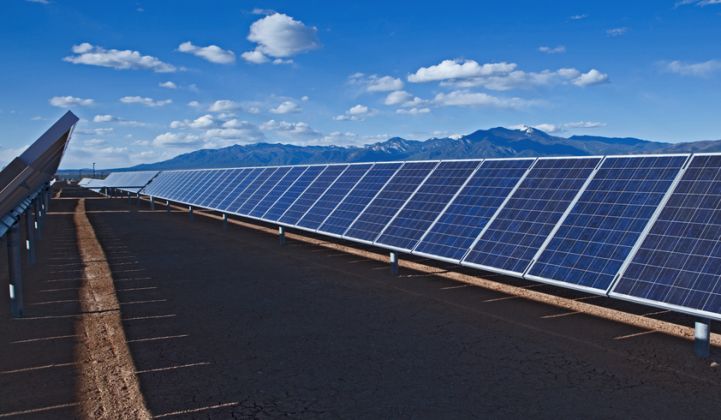Solar power component costs are dropping globally, with a 15 percent to 20 percent reduction expected by 2020. But manufacturers and developers in Mexico must avoid cutting corners in their bid to follow trends elsewhere in order to make solar more accessible.
Mexico is likely to see 7 gigawatts of solar capacity by 2020, almost seven times the current level; however, bringing down installation costs will be key to that growth, said MJ Shiao, GTM Research’s director of solar research, during the company’s Solar Summit in Mexico City last month.
Shiao predicted that the global weighted installed cost of solar PV will drop by 33 percent by 2020. But he said the drop will be less steep in the future, and companies must seek to reduce both labor and soft costs, while choosing hardware that will in turn reduce maintenance expenditures.
According to a 2015 Deutsche Bank report, solar is already the cheapest energy source in dozens of countries. Costs need to continue to drop in emerging markets such as Mexico, where solar still faces stiff competition for customers.
Total installation costs of large-scale PV systems dropped 29 percent to 65 percent between 2009 and 2014 in Mexico, depending on the region, according to the Mexican solar power association (Asolmex). The cost of generating electricity from large-scale solar power plants has halved since 2010 in Mexico, while costs have dropped by 75 percent globally since 2009.
Keeping up with the global cost curve may encourage developers to buy lower-quality equipment or build projects to diminished quality standards, warned experts.
“Mexico needs to see a race to value and not just a race to price,” said Luis Morales, senior business manager for Latin America and the Caribbean at Enphase Energy.
That sentiment was shared by fellow panelist Dean Solon, CEO of Shoals Technologies Group. “You can’t risk lives with low-quality systems,” Solon said, referring to wiring, racking and trackers.
Solon said that Shoals is seeking local partners to manufacture in the country. California-based NEXTracker announced in January it would begin manufacturing at its plant in Guadalajara, Mexico to meet growing local demand for its trackers as well.
Exosun also now builds half of its tracking components for local and U.S. customers in Mexico, reducing lead times and transportation costs, and is seeking to increase its network of local manufacturing partners.
More panel manufacturers are following suit as labor costs rise in China.
“The worldwide tracker market is booming,” Exosun’s marketing director Maria Lahuerta told GTM. “Trackers have become attractive as prices have fallen rapidly in recent years. They are now considered a go-to method to achieve better energy harvest and accelerate return on investment.”
Adding trackers can increase costs by 5 percent to 10 percent, but can provide up to 30 percent more power generation, said GTM Research’s Shiao.
One way to grow a domestic component manufacturing market would be to stipulate minimum local content requirements. Mexico has implemented such requirements for oil and gas contracts as part of its energy market reform, but has not yet acted in the power industry.
Module costs still make up the highest percentage of project expenditure in the U.S., accounting for 42 percent. Balance-of-system costs are currently at 27 percent. Soft costs make up 31 percent of the total cost of a system in Mexico -- a number that is higher than that of its American neighbor, likely due to the early stage of the Mexican market and the difficulties in customer acquisition.
Developers must also take into account that solar is not maintenance-free, and while short-term costs can be reduced using cheaper hardware, long-term component servicing may raise costs over the lifetime of the project.
Ensuring fast and easy installation using premounted and self-grounding elements with limited parts, low-maintenance motors, zero lubrication and no sensors greatly reduces long-term costs, Exosun’s Lahuerta said.
Shiao pointed to trends underway in more developed markets as examples for Mexico to follow. More advanced modules, such as bifacial and multi-junction crystalline, as well as new cell layouts, higher switching frequencies and increasing power density, will drive expenditures down.



